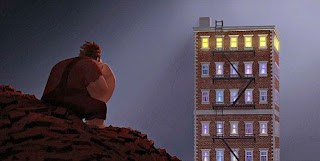As the semester comes to a conclusion, so will my writing
class. It is now time to reflect back on what I have learned throughout the
journey.
First, I learned that some villains are able to draw
sympathy from the audience. This is one of the reasons why the villains of
films tend to have a following just like the heroes (if not larger sometimes).
This occurs a lot when the audience is able to relate to the villain. Almost everybody
is able to relate to wanting status, wealth, and having so much jealousy that
people will go to crazy conditions to get them. Although people in real life
most likely will not murder, kidnap, or steal to get these desires, people are
able to understand villains when they do just that. Take, for instance, Jafar
from Aladdin (1992). Jafar has been
stuck taking orders from the Sultan for years, and he is tired of having to
follow orders from him. The audience is sympathetic because most of them would
rather have the status and power of being sultan than holding Jafar’s position.
As a result of this and Jafar’s cool sorcerer powers, Jafar has a large
following of fans.
Next, I learned that there is not always one clear villain
in every film. Often, the villains in films are simply the face of a larger,
overarching theme of a movie. For example, in WALL-E (2008), AUTO is displayed as the villain of the film because
he tries to keep everyone from returning back to Earth; however, AUTO is just
following his programming that man made so that there would be no return. Earth
was believed to be uninhabitable forever. In this film, AUTO is not truly the
main villain, but man is. Man has made Earth unfit to live on through
production and manufacturing. Man has become obese and relies on technology too
heavily for every day functions. Man programmed AUTO not to allow the ship to
return to Earth. AUTO is simply the face of man as a villain throughout this
movie.
In this course, I learned that evil and villainy are not
always associated with those portrayed as “bad guys.” Different groups of
people often see characters throughout the film as evil. For example, feminists
see the new wave of Disney princesses as villains. Although the princesses have
more freedom, power, and have a stronger voice, the feminists see these as
useless if the ultimate goal of the princess is to find love and get married,
because the princesses lose all of the power they once had in order to become
bound to their princes. The illustration of these characters as reliant on men
causes the feminist leaders to see these princesses as villains.
Perhaps the most important message that I have taken from
this course is the impact that villains and Disney can have on young children
through developing assumptions in young minds that are able to be imprinted on.
I have constantly talked about this in my posts throughout the semester, so I
will not make you read all of that again.
All in all, I believe that I have gained much knowledge about
evil and villainy throughout this course. As I have stated before, coming into
this course, I had limited knowledge about Disney or any of their villains.
Now, my knowledge of Disney improved as well as my understanding of evil.











